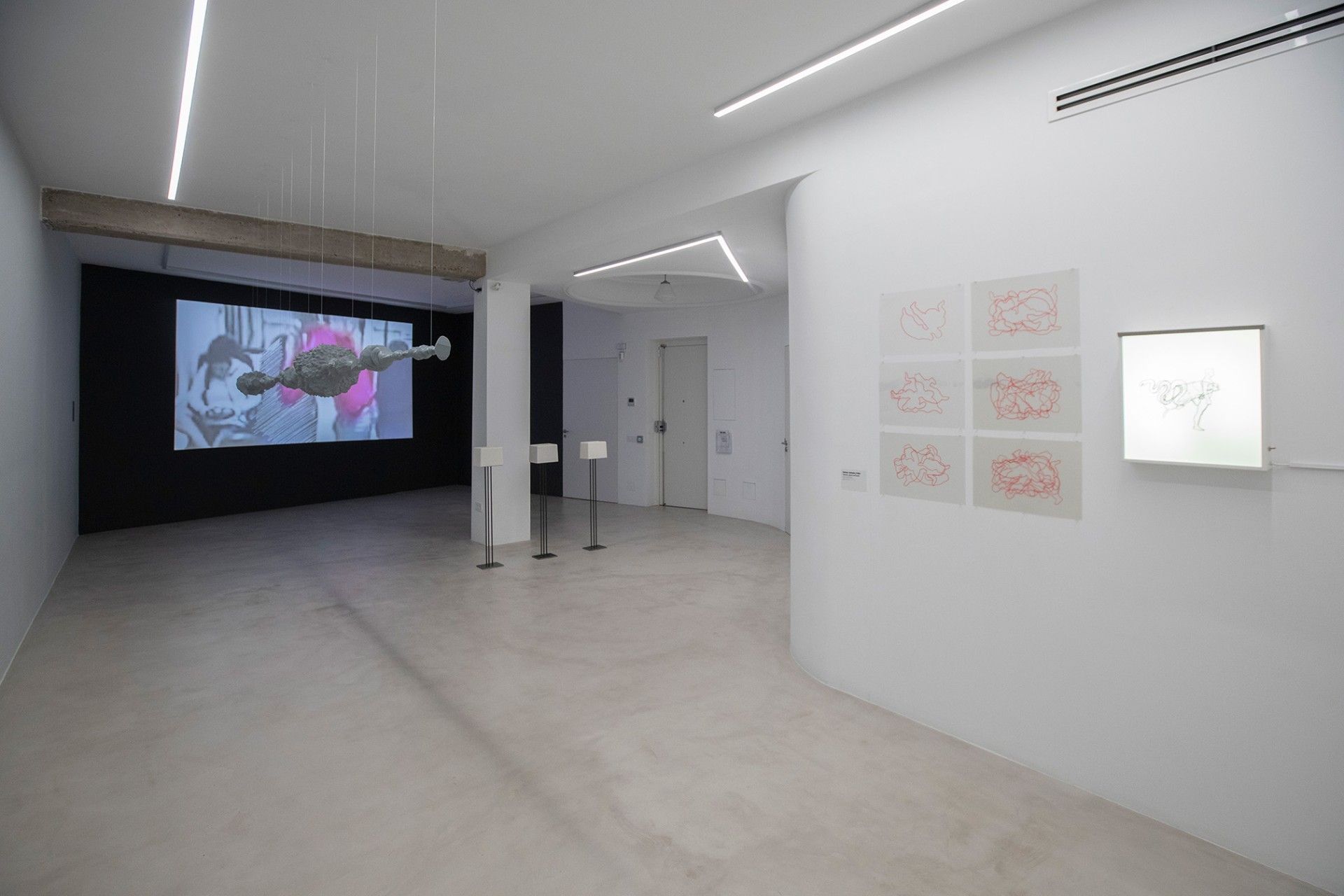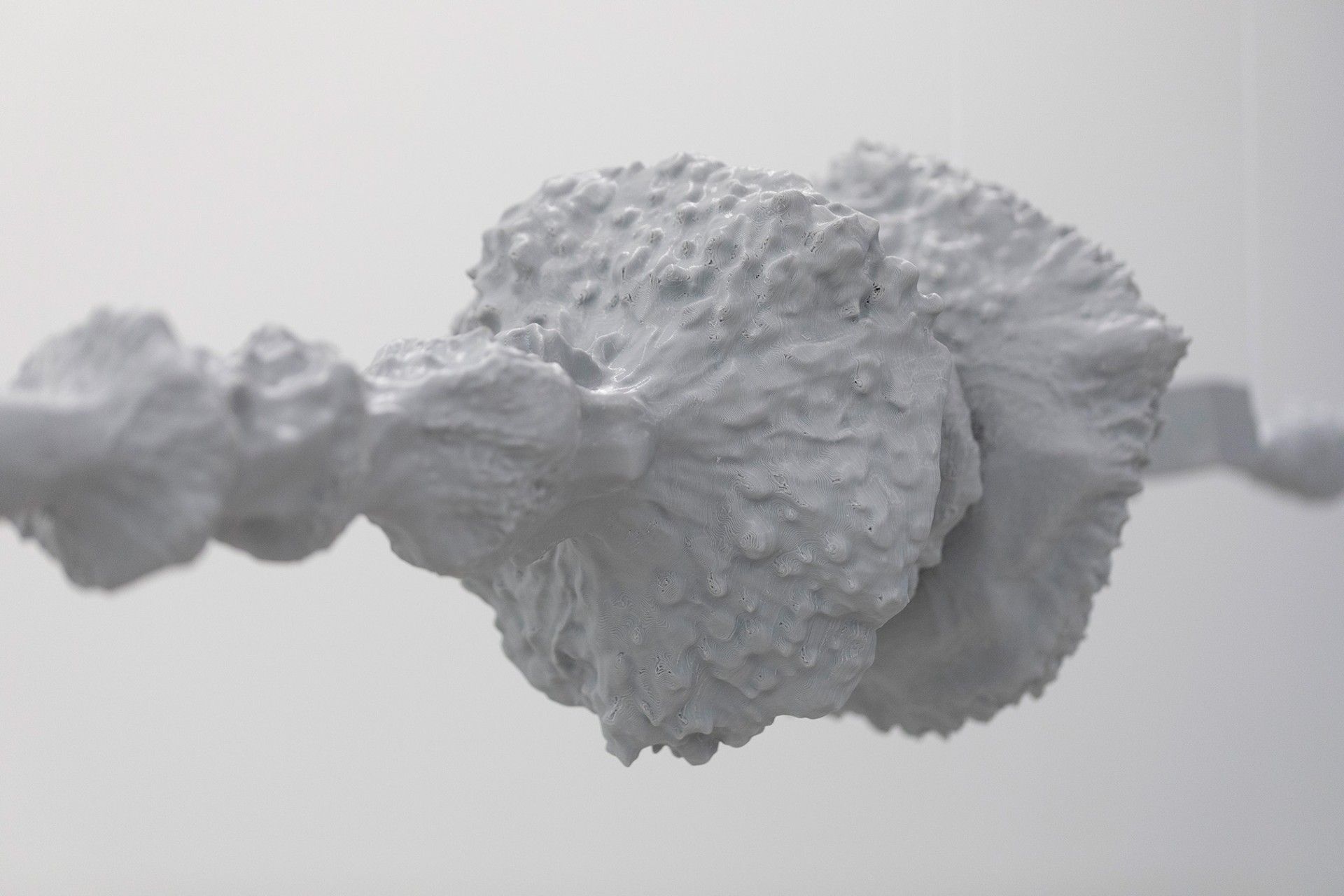Oído Odio

J'AI LA HAINE
“Any new and unexpected contact with reality will always have catastrophic effects from the outset". Ludwig BINSWANGER, The Infinite Healing, 1921 "1. Hatred is the most extreme emotion (if it is an emotion). 2. Expression of hatred is more likely to provoke extreme social disapproval than expression of other emotions. 3. Displays of hatred exhibit more irrationality than displays of other emotions." Samuel CAMERON, The Economics of Hate, 2009 "I like to read a murder mystery I like to know the killer isn't me". Erasure, Love to Hate you, 1991 An approach to hate involves giving a body - theoretical, but also physical - to one of the apparently most reviled emotions. The very Roman etymology of the term refers us to that detestable conduct, that odium that we have incorporated into Spanish by way of culture. The abuse of italics is not accidental, it implies a continuous and programmed pointing out. Possibly my need to identify hate with a body is constructed from a desire to visualise animosity or because it will always have an outline, a silhouette, a framework in which to try to sketch, despite its elusiveness, a definition. The history of philosophy itself points to hatred as a desire for annihilation in Aristotle, the consciousness of evil in Descartes, a pain due to an external cause in Spinoza, or an irreducible and indefinable feeling in Hume. Of course, alongside her own personal vision, there is a reflection of the historical moment but, above all, an exemplification of how this feeling was instrumentalised at each moment. "Many times, in feminist circles, I have heard white women speak of a particular black woman's hostility towards white women, as if these feelings were not rooted in historical relationships and contemporary interactions. Rather than exploring the reasons why this hostility exists or granting it legitimacy as an appropriate response to domination or exploitation, they see this woman as engaging in difficult, problematic, irrational and 'crazy' behaviour." bell HOOKS, Teaching to Transgress. Education as the practice of freedom, 1994 It is clear that hatred is one of the subjects of our sentimental education, its complex web of fear, repulsion and superiority has always been used as an exercise in group cohesion. The presence of an enemy is not even necessary, the important thing is to find a way to evade our responsibility, to displace it and focus it on a blind spot governed by the scale of difference that has been set. Something as innocent as distributing the same garment in two colours will have already defined two teams and will sow an ancestral rivalry by the time that garment becomes their property. There are numerous studies, such as the aforementioned one by Cameron, Chavs by Owen Jones or Roots of Hate by Brustein (2003), which decode the ways in which this emotion is exploited, in one case from an economic point of view, and in the second case including religion, race and politics alongside capital as supports that legitimise anti-Semitism. So we see different invocations of hatred, so many that we could almost confuse them with their foundations and effects. How arbitrary are the patterns that govern it? Almost as arbitrary as those we have considered should define love or desire, since all of them need an object. We cannot establish these relations without defining addressees, even if these are ourselves, at least in the mental structure that Spanish or English favours, in French one can have hate without an object. "Is there so much hate for the ones we love? Kate BUSH, Running Up that Hill (A Deal With God), 1985 "No, why should I hate it? How does one hate a country, or love it? (...) I am not capable. (...) What is the point of enclosing everything in a frontier, giving it a name and ceasing to love it where the name changes? What is love of one's country? Hate of what is not one's own country? Nothing good, just self-love? Ursula K. LE GUIN, The Left Hand of Darkness, 1973 Aspects related to hatred allow us to become passive subjects, we have nothing to do with what we abhor or why, or why we are the object of others' animosity. Thinking that hatred is an educated emotion also seems to serve as a mitigating factor. We might claim that it is alien to all of us, while the emotions we identify as positive emanate from us, so full of goodness that we inadvertently share it. We take comfort in knowing that we were not the murderers when our crime is constantly being committed. It may surround us, like an effluvium or an ooze, or we may be trapped in its structure. It has already been mentioned that its patterns are arbitrary, but that does not mean we can think of them as innocent. The mere mention of a term such as hate crime will unfortunately provide us with a list of what has been acceptable to abhor: the feminine, foreign, rationalised, deviant, mad, old, poor, sick.... "It will be like in the theatre. Only we will see the action and the characters from the audience, but also from the curtains inside. So we will know the pits, the grills, the pulleys, the curtains and backdrops, the backstage, the machinists who move all that, the prompter who blows the recitative from his shell". Arturo JAURETCHE, Los profetas del odio y la Yapa (La colonización pedagógica), 1967 "The Cabaret Voltaire was for art because "there were artists and bourgeois. You had to love one and hate the other". John ELDERFIELD, Hugo BALL, Flight Out of Time, 1996 Since the appearance of the so-called historical avant-gardes, it has been the engine of innovation or of opposition and transgression of the old-fashioned. It is still very useful today. That is why it is even more productive to propose an interdisciplinary analysis that starts and returns to the terrain of art itself. Diego del Pozo Barriuso (Valladolid, 1974) proposed an interdisciplinary investigation that is presented in this exhibition. The film, drawings and sculptures bring us closer to hate in a pendular movement that allows us to deconstruct its structures while defining it as a viscous and surrounding entity capable of self-amplification. Based on an exhaustive documentation, which includes the personalisation of various hate crimes, the work allows us to delve into aspects such as the body - both its own and social -, models of representation, formalisation and dissemination, emotional capitalism and the malaise that runs through us. As in any analysis, the problem lies in the distance from the subject, which is why this choreography forces us to position ourselves and rethink our modes of contact, blinking in perplexity, surprised as much by the slap as by the caress. Text by Eduardo García Nieto Independent curator and educator



Available works

Afinando Diego del Pozo Barriuso
Series of 3 drawings on polyester paper Variable dimensions Unique piece
This work has been exhibited in the following exhibitions: Oído Odio
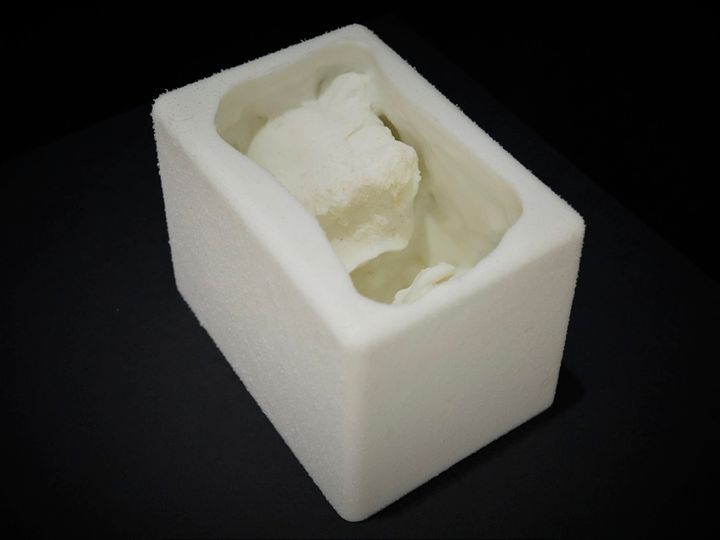
Agujero (Entre barbilla y cabeza) Diego del Pozo Barriuso
Silicone sculpture Variable dimensions Unique piece
This work has been exhibited in the following exhibitions: Oído Odio

Agujero (Entre cabeza y pie con deportiva) Diego del Pozo Barriuso
Silicone sculpture Variable dimensions Unique piece
This work has been exhibited in the following exhibitions: Oído Odio

Agujero (Entre garganta y rodilla) Diego del Pozo Barriuso
Silicone sculpture Variable dimensions Unique piece
This work has been exhibited in the following exhibitions: Oído Odio

Agujero (Entre mano con brazo y rostro) Diego del Pozo Barriuso
Silicone sculpture Variable dimensions Unique piece
This work has been exhibited in the following exhibitions: Oído Odio

Agujero (Entre mano con piedra y pliegue de cuello con hombro) Diego del Pozo Barriuso
Silicone sculpture Variable dimensions Unique piece
This work has been exhibited in the following exhibitions: Oído Odio

Agujero (Entre piedra y cintura) Diego del Pozo Barriuso
Silicone sculpture Variable dimensions Unique piece
This work has been exhibited in the following exhibitions: Oído Odio
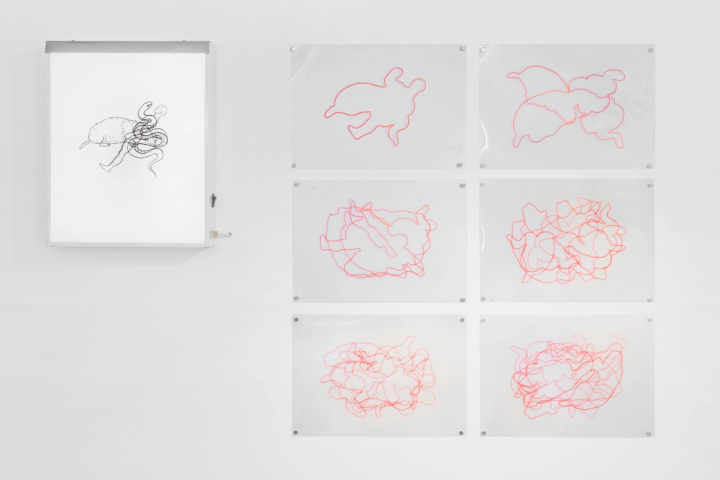
Fantasías, fantasmas y fósiles Diego del Pozo Barriuso
Series of drawings onpolyester papers and acetates with a light box Variable dimensions Unique piece
This work has been exhibited in the following exhibitions: OÍDO ODIO
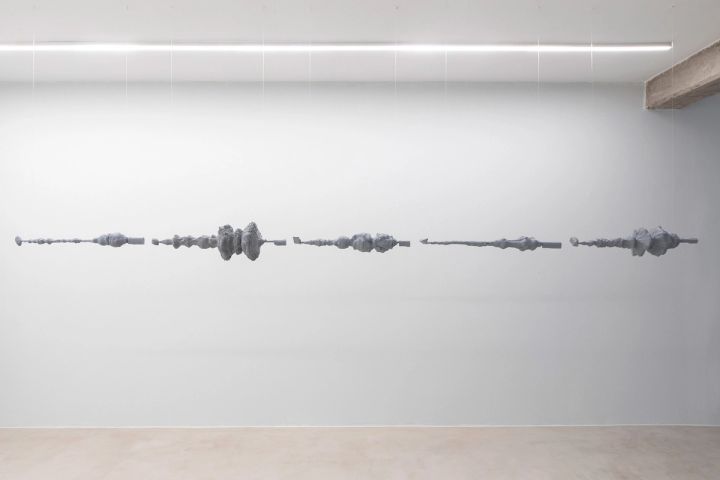
Línea de tiempo (cuerpos, explosiones, armas...) Diego del Pozo Barriuso
Installation of 5 PLA sculptures hung lined up and drawing on polyester paper Variable dimensions Drawing 69,5 x 50 cm Unique Piece
This work has been exhibited in the following exhibitions: OÍDO ODIO

Masa de Odio Diego del Pozo Barriuso
Printing on photographic paper Hahnemühle Photo Rag Baryta 315 gr. 42 x 23,6 cm Edition 1/5 + PA
This work has been exhibited in the following exhibitions: OÍDO ODIO

Muy Pegajoso Diego del Pozo Barriuso
Series of 3 drawings on polyester paper 82,5 x 35 cm e/u Unique piece
This work has been exhibited in the following exhibitions: OÍDO ODIO

Ojos que acarician Diego del Pozo Barriuso
Drawing on polyester paper Variable dimensions Unique piece
This work has been exhibited in the following exhibitions: OÍDO ODIO

Oído Odio Diego del Pozo Barriuso
2K Video, Color, Stereo, 43'44' Edition 1/3 + 2PA
This work has been exhibited in the following exhibitions: OÍDO ODIO

Vacíos de Odio Diego del Pozo Barriuso
Series of 3 prints on photo paper Hahnemühle Photo Rag Baryta 315 grams 42 x 23.6 cm each-e/u Edition 1/5 + PA
This work has been exhibited in the following exhibitions: OÍDO ODIO
Related exhibitions

Articulations of Desire, Vol. 2 Various Artists
From May 23 to August 8, 2025

Articulations of Desire Various Artists
From June 7 to August 2, 2024

This Fucking Name Christto & Andrew,Andrew Roberts,Aggtelek,Diego del Pozo Barriuso,Fito Conesa,Momu & No Es,Natacha Lesueur,Ovidi Benet,Pablo Durango
From March 11 to June 30, 2022

Mixtape Vol1 Christto & Andrew,Carlos Sáez,Antonio Fernández Alvira,Antoine et Manuel,Andrew Roberts,Aggtelek,Diego del Pozo Barriuso,Fito Conesa,Michael Roy,Mit Borrás,Momu & No Es,Natacha Lesueur,Ovidi Benet,Vicky Uslé,Octavi Serra,Sarah & Charles,Carmen Ortíz Blanco,Pablo Durango
From September 15 to November 25, 2022

Oído Odio Diego del Pozo Barriuso
From April 12 to June 14, 2024


